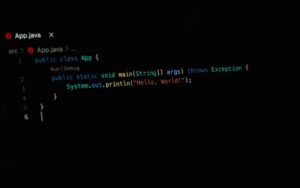Application of Zener Diode
The zener diode is a unique component that finds various applications in electronics. It works in the reverse-biased mode and has a specific breakdown voltage known as the ‘zener voltage’. In this article, we will explore the different ways in which zener diodes are used and their significance in electronic circuits.
Key Takeaways
- Zener diodes are primarily used as voltage regulators.
- They are commonly used in power supplies, voltage stabilizers, and overvoltage protection circuits.
- Zener diodes can be employed in signal clamping and voltage reference circuits.
Voltage Regulation
One of the primary applications of zener diodes is voltage regulation. When connected in parallel with a load, the zener diode maintains a constant output voltage regardless of changes in input voltage or load resistance. This makes it ideal for stabilizing power supplies and preventing damage to sensitive electronic components.
*Zener diodes provide a consistent voltage output even with varying input conditions.
Overvoltage Protection
Zener diodes are commonly used in overvoltage protection circuits. When the voltage across a circuit exceeds a certain threshold, the zener diode begins to conduct current, diverting the excess voltage and protecting the circuit from damage. This feature is particularly important in electronic systems where voltage spikes or surges may occur.
*Zener diodes safeguard electronic circuits by diverting excess voltage during surges.
Signal Clamping
Another application of zener diodes is in signal clamping circuits. By combining a zener diode with a capacitor, the zener voltage effectively clamps the signal to a specific range. This is useful in applications where the input signal needs to be limited to a certain voltage level. Signal clamping is commonly used in video and audio processing circuits.
*Zener diodes limit the voltage range of input signals in signal clamping circuits.
| Zener Diode Applications | Voltage Regulation | Overvoltage Protection | Signal Clamping |
|---|---|---|---|
| Usage | Stabilizing power supplies | Protecting circuits from voltage spikes | Limiting voltage range of input signals |
Voltage Reference
Zener diodes also serve as voltage references in electronic circuits. Their stable and precise breakdown voltage makes them ideal for generating a stable reference voltage. This reference voltage can then be used for comparison or as a biasing voltage in other electronic components.
*Zener diodes provide stable reference voltages in electronic circuits.
Variety of Zener Diod
Zener diodes are available in various voltage ratings and power capacities to suit different circuit requirements. They are typically represented by their voltage ratings, such as 1.8V, 5.1V, or 12V. The power rating of a zener diode determines its ability to handle electrical current without getting damaged.
*Zener diodes come in different voltage ratings and power capacities for diverse applications.
| Zener Diode Ratings | Common Voltage Ratings | Power Rating |
|---|---|---|
| Examples | 1.8V, 5.1V, 12V | 1/4W, 1/2W, 1W |
Conclusion
Zener diodes are versatile components that find extensive applications in electronic circuits. From voltage regulation and overvoltage protection to signal clamping and voltage references, they serve various purposes. Their ability to maintain a constant voltage and protect sensitive components makes them invaluable in electronics.

Common Misconceptions
Misconception 1: Zener diodes can only be used for voltage regulation
One of the most common misconceptions about Zener diodes is that they can only be used for voltage regulation. While it is true that Zener diodes are commonly used for this purpose, they have several other applications as well. Zener diodes can be used in voltage clamping circuits, waveform generation circuits, and as surge suppressors.
- Zener diodes can also be used in voltage clamping circuits.
- Zener diodes are commonly used for waveform generation.
- Zener diodes can function as surge suppressors.
Misconception 2: Zener diodes can handle unlimited amounts of current
Another misconception is that Zener diodes can handle unlimited amounts of current. While Zener diodes are designed to handle higher currents compared to regular diodes, they have their limitations. Excessive current through a Zener diode can lead to overheating and even failure.
- Zener diodes have higher current handling capabilities than regular diodes.
- Excessive current through a Zener diode can cause overheating.
- Zener diodes have their limitations and can fail if subjected to excessive current.
Misconception 3: Zener diodes only work in forward-biased mode
Many people believe that Zener diodes only function in forward-biased mode. However, Zener diodes are specifically designed to operate in reverse-biased mode, where they exhibit the Zener effect. This effect allows Zener diodes to maintain a constant voltage across their terminals, regardless of the current flowing through them.
- Zener diodes are designed to operate in reverse-biased mode.
- Zener diodes exhibit the Zener effect in reverse-biased mode.
- The Zener effect allows Zener diodes to maintain a constant voltage.
Misconception 4: Zener diodes always produce a stable output voltage
Contrary to popular belief, Zener diodes do not always produce a stable output voltage. The stability of the output voltage depends on various factors such as the quality of the diode, temperature, and current fluctuations. External factors can affect the Zener diode’s ability to maintain a precise voltage reference.
- The stability of the Zener diode’s output voltage depends on various factors.
- Temperature fluctuations can affect the stability of the output voltage.
- Zener diode’s ability to maintain a precise voltage reference can be influenced by external factors.
Misconception 5: Zener diodes are only available in a limited range of voltages
Some people wrongly assume that Zener diodes are only available in a limited range of voltages. In reality, Zener diodes are manufactured in various voltage ratings, ranging from a few volts to several hundred volts. This wide range of options allows designers and engineers to select the appropriate Zener diode for their specific application.
- Zener diodes are manufactured in various voltage ratings.
- The voltage range of Zener diodes varies from a few volts to several hundred volts.
- Designers and engineers can select the appropriate Zener diode based on their specific application.

Introduction
In this article, we will explore the practical applications of the Zener diode. A Zener diode is a special type of diode that operates in the reverse-biased breakdown region, allowing it to maintain a constant voltage across its terminals. This unique characteristic makes it useful in a variety of electronic circuits, ranging from voltage regulation to waveform clipping. Let’s dive into the various applications of Zener diodes and discover their importance in modern electronics.
Application 1: Voltage Regulation
Zener diodes are commonly used for voltage regulation purposes. By connecting a Zener diode in parallel to a load, it ensures a stable voltage across the load, protecting it from voltage fluctuations. This feature finds extensive applications in power supplies, where maintaining a constant voltage is crucial for the proper operation of electronic devices.
Application 2: Overvoltage Protection
Zener diodes can be employed as voltage clamps to protect electronic components from damage due to excessive voltage. When the input voltage exceeds a certain threshold, the Zener diode starts conducting, diverting the excess voltage away from the sensitive components. This characteristic ensures the longevity and reliability of electronic systems.
Application 3: Waveform Clipping
Zener diodes can be used to clip or limit waveform amplitudes. By connecting a Zener diode in series with a load, it acts as a voltage reference and limits the output signal to a predetermined level. This application is often seen in audio and video circuits to prevent signal distortion and ensure proper signal quality.
Application 4: Voltage Multiplier Circuits
Zener diodes can also be used in voltage multiplier circuits, which generate higher DC voltages from an AC input. By combining capacitors and diodes in a specific configuration, Zener diodes help to increase the output voltage levels. This application is utilized in various electronic devices, including cathode-ray tube (CRT) televisions and X-ray generators.
Application 5: Frequency Conversion
Zener diodes find application in frequency conversion circuits, converting signals from one frequency to another. By utilizing the Zener breakdown characteristic, the input signal can be shifted to a different frequency range. This application is commonly employed in wireless communication systems and frequency modulators.
Application 6: Surge Suppression
Due to their ability to handle high current and dissipate excess power, Zener diodes are used for surge suppression. When a surge or transient occurs, Zener diodes limit the voltage spikes to protect sensitive components. This application is crucial in power distribution systems, safeguarding against voltage surges caused by lightning strikes or electrical faults.
Application 7: Current Limiting
Zener diodes can be utilized as current-limiting devices in electronic circuits. When connected in series with a load, they regulate the current flowing through the load, preventing it from exceeding a specific value. This application ensures the safe operation of devices by safely limiting the current within acceptable levels.
Application 8: Logic-Level Shifting
Zener diodes are employed in logic-level shifting circuits, where the voltage levels of signals need to be adjusted to match the requirements of different digital devices. By using Zener diodes in conjunction with resistors, the voltage levels can be shifted effectively, enabling seamless communication between devices operating at different signal levels.
Application 9: Voltage-to-Frequency Conversion
Zener diodes are essential components in voltage-to-frequency conversion circuits. By utilizing the Zener breakdown phenomenon, the input voltage can be converted into frequency variations, making it easier to measure and analyze. This application is widely used in digital voltmeters and frequency metering instruments.
Application 10: Noise Generation
Zener diodes can be employed to generate noise signals for various applications, including testing and communication systems. By exploiting the random fluctuations occurring during the Zener breakdown, noise signals of specific characteristics can be obtained. This application finds utility in cryptography, random number generation, and noise-based communication systems.
Conclusion
The Zener diode, with its unique voltage regulation and breakdown characteristics, plays a pivotal role in a multitude of electronic applications. From voltage regulation and waveform clipping to surge suppression and frequency conversion, the versatile Zener diode ensures the reliability, stability, and efficient operation of electronic systems. Its crucial role in modern electronics emphasizes the significance of understanding and utilizing this specialized diode in various circuit designs.
Frequently Asked Questions
What is a Zener diode?
A Zener diode is a special type of diode that operates in the reverse-biased and breakdown regions of its voltage-current characteristics. It is designed to maintain a fixed voltage across its terminals, even when the applied voltage is varied within a certain range.
What are the common applications of Zener diodes?
Zener diodes find applications in voltage regulation, voltage reference, overvoltage protection, waveform shaping, and clipping circuits. They are commonly used in power supplies, voltage stabilizers, surge protectors, and DC-to-DC converters.
How does a Zener diode provide voltage regulation?
When a Zener diode is reverse-biased and operating in the breakdown region, it maintains a nearly constant voltage across its terminals. By connecting the Zener diode in parallel with a load, the load voltage can be stabilized at the Zener voltage value, providing regulation against variations in the input voltage.
What is the breakdown voltage of a Zener diode?
The breakdown voltage of a Zener diode is the voltage at which it starts conducting significant current in the reverse-biased direction. It is designed to have a specific breakdown voltage, typically ranging from a few volts to several hundred volts.
Can Zener diodes be used for both positive and negative voltages?
Yes, Zener diodes can be used for both positive and negative voltages. However, their breakdown characteristics are different for positive and negative voltages. Care should be taken to select the appropriate type of Zener diode based on the desired polarity of the voltage regulation.
Can Zener diodes be used as rectifiers?
No, Zener diodes cannot be used as rectifiers because they are designed to operate in the reverse-biased region. Unlike rectifier diodes, Zener diodes are not intended for converting alternating current (AC) to direct current (DC).
Do Zener diodes have any limitations?
Yes, Zener diodes have certain limitations. They have a maximum power dissipation limit, beyond which they may get damaged. Additionally, Zener diodes have a maximum current rating and a maximum voltage rating that should not be exceeded to ensure their proper functioning.
Can Zener diodes be used for precision voltage references?
Yes, Zener diodes are commonly used as precision voltage references. By selecting Zener diodes with a specified breakdown voltage tolerance and incorporating them into precision voltage divider circuits, precise voltage references can be obtained for various applications.
Are Zener diodes temperature-dependent?
Yes, Zener diodes are temperature-dependent devices. Their breakdown voltage can vary with changes in temperature. To minimize temperature effects, Zener diodes with temperature-compensated characteristics can be used.
Can Zener diodes handle high currents?
Zener diodes are typically limited in their current-carrying capacity. While they can handle small amounts of current, they are not designed to handle high currents. If high current needs to be regulated, additional circuitry such as power transistors or voltage regulators should be employed.





